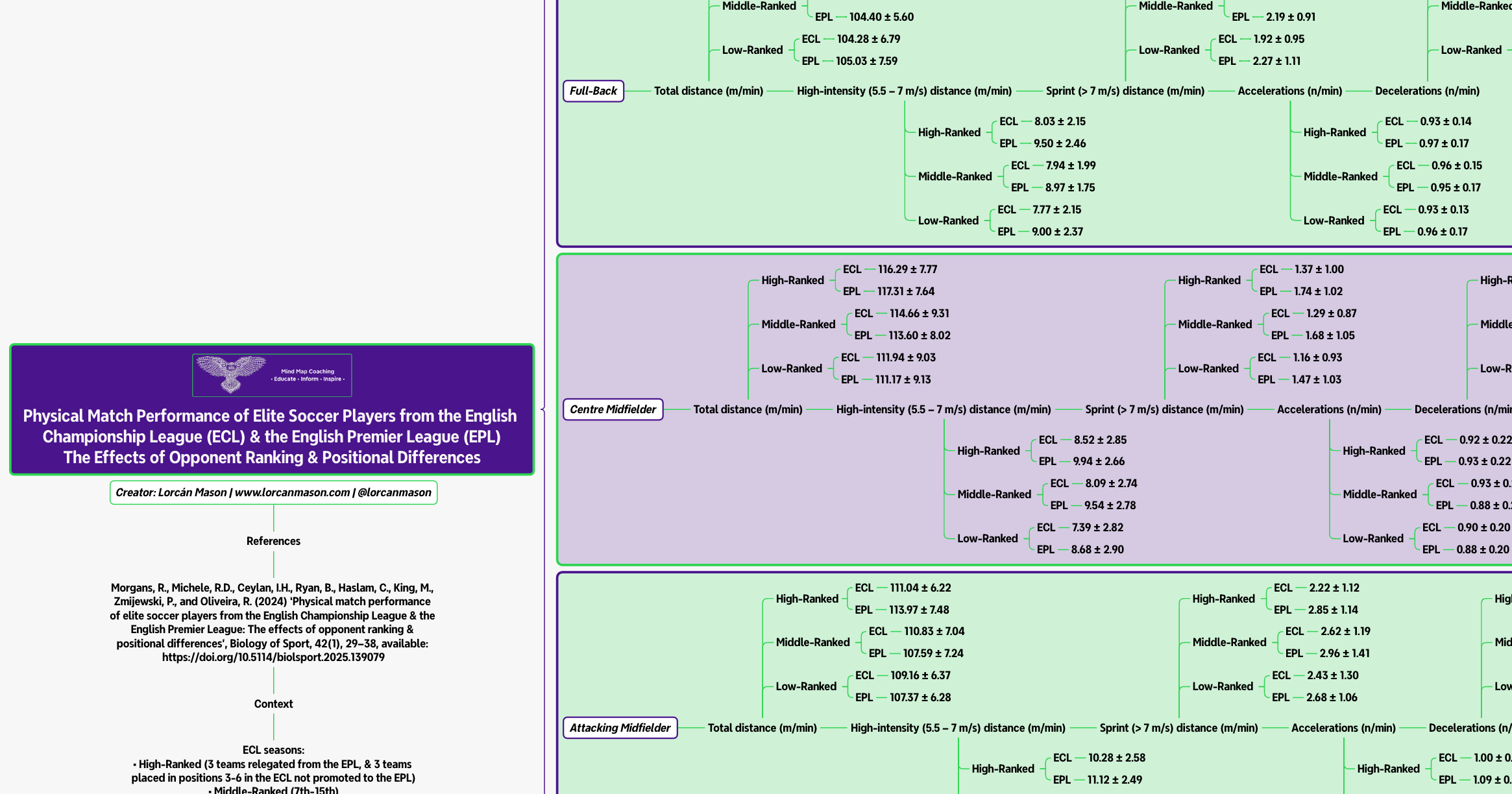Physical Match Performance of Elite Soccer Players from the English Championship League (ECL) & the English Premier League (EPL): The Effects of Opponent Ranking & Positional Differences
The analysis of player performance in elite soccer matches against varied opponents provides coaches and performance staff with valuable insights to enhance training, recovery, and tactical strategies, aiming to improve match outcomes.

Elite soccer necessitates a comprehensive comprehension of the diverse elements influencing player performance, such as opponent ranking, league status, and positional disparities, which are crucial determinants in this context. The correlation between opponent ranking and player performance has been a consistent focal point of investigation in the realm of elite soccer. Recent studies have emphasized the increased physical demands placed on players when facing high-ranked opponents, underscoring the necessity for both individual players and teams to adjust to the diverse challenges presented by top-quality adversaries. It is imperative to grasp the variations in physical exertion levels across different tiers of opposition quality, ranging from low to middle to high-ranked teams, as well as the distinct positional requirements, as this knowledge is fundamental for formulating effective training regimens and tactical approaches.
A deep understanding of how these positional distinctions intersect with the obstacles posed by varying levels of opposition ranking is crucial for customizing training protocols and enhancing team strategies to effectively address these specific challenges. The identification of these demands offers a more holistic insight into the performance of players in different positions during elite soccer matches against opponents of varying rankings, ultimately offering valuable practical guidance for coaches and performance staff aiming to optimize training, recovery, and tactical methodologies based on positional responsibilities and opponent rankings to improve match outcomes. Subsequently, coaches are able to customize positional and personalized training schedules to meet the specific physical requirements associated with matches against opponents of different ranks, utilizing the most intense external load values as a preparatory strategy for worst-case scenarios.

